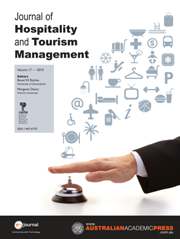Article contents
Adoption of WLANs in the Hotel Industry: A Theoretical Cost-Analytic Framework
Published online by Cambridge University Press: 23 February 2012
Abstract
As many hotels have started implementing wireless networks to support a wide variety of business processes, others have followed suit in order to match the competitor's service offerings. Thus, although the adoption of wireless technologies is in many instances based on a bandwagon effect (Wolff, 2003), there are a number of factors potentially influencing the decision of whether or not to implement wireless technologies in hotel properties. This article provides an overview of the use of this technology in the hotel industry, identifies social, technical, and organisational factors influencing adoption decisions, and establishes a cost-theoretic model to analyse adoption decisions. The cost-analytic framework extends the theoretical underpinnings by creating a decision schedule to map the direct and indirect (non-linear) effects surrounding the evolving trend towards introducing wireless Internet access in hotels. The framework allows managers to objectively trace the economic net-present-value of their technology investment decisions. The cost-analytic model implicates adoption thresholds related to technology costs and setup-indirect effects that can mar direct positive effects of technical, organisational, and social antecedents.
- Type
- Articles
- Information
- Journal of Hospitality and Tourism Management , Volume 13 , Issue 2 , 01 August 2006 , pp. 189 - 198
- Copyright
- Copyright © Cambridge University Press 2006
- 8
- Cited by


